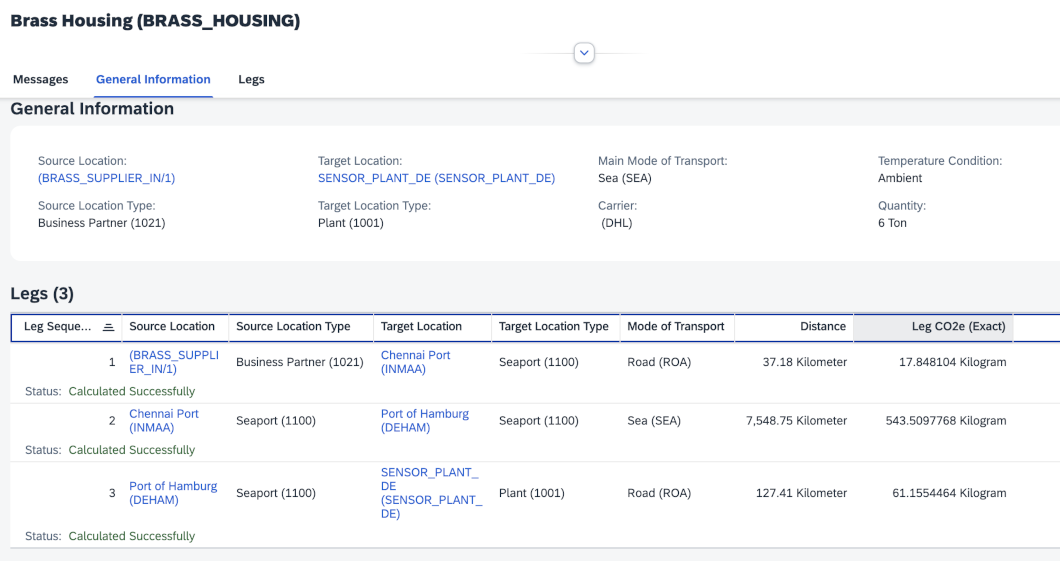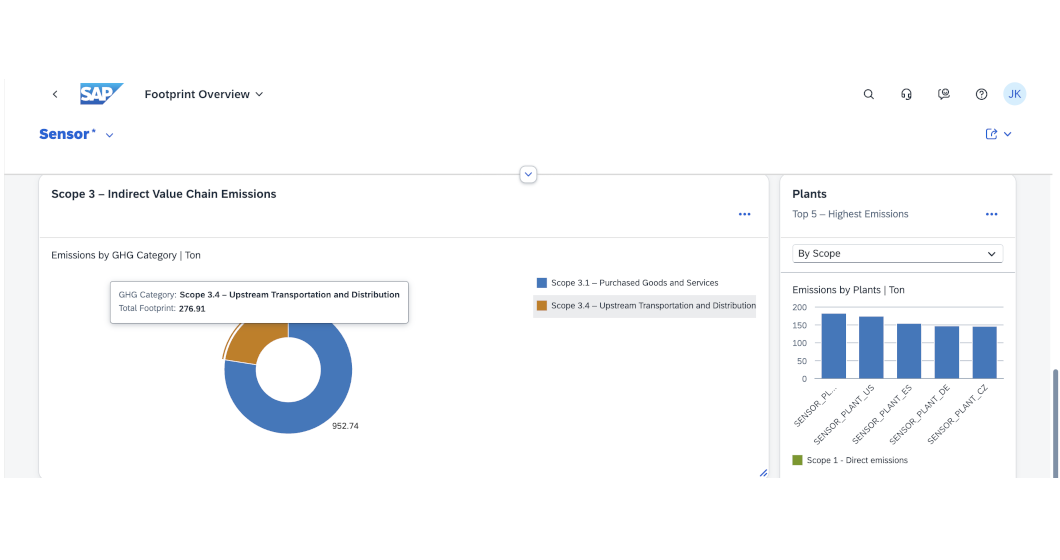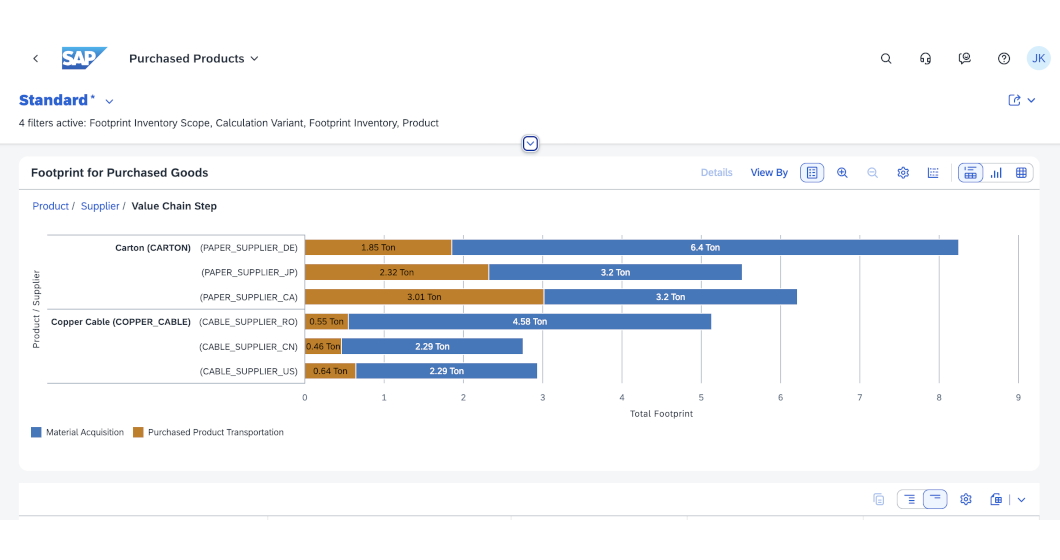

Freight transport is a major driver of greenhouse gas emissions in global supply chains, but gaining accurate insights into its impact remains a challenge. The new ERP-based transport footprint capability in SAP Sustainability Footprint Management (SFM) changes that, enabling organizations to automatically measure, monitor, and report emissions using the data already embedded in their ERP systems.
By tapping into existing material movement records from your ERP system, SAP SFM automatically calculates emissions for every transport activity across your logistics network. Location information is enriched with detailed addresses and geographic data, delivering higher accuracy and transparency. To simplify adoption, SAP also provides standard reference locations, such as seaports, so you can start tracking without lengthy preparation.
Configured transport parameters, like the primary mode of transport and default connection points (e.g., seaports), allow the system to build routes and legs automatically. These routes are then linked with emission factors specific to each transport mode, producing reliable and consistent footprint data.

The calculated transport emissions flow seamlessly into corporate and product-level carbon reporting within SAP SFM. They are displayed in dashboards, charts, and breakdowns, turning transportation into a visible and manageable element of your sustainability performance.


Transport emissions have often remained a blind spot in sustainability reporting. With this new functionality, organizations gain the visibility they need to transform hidden logistics data into actionable insights, cutting both emissions and the manual effort required for data collection.
Get in touch with us to explore how SAP’s latest sustainability features can drive measurable impact for your organization.